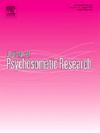Nature connectedness alters the structure of the dehumanization-mental symptoms network: A comparative cross-sectional network analysis
IF 3.5
2区 医学
Q2 PSYCHIATRY
引用次数: 0
Abstract
Background
Dehumanization is often closely linked to mental health issues, connection with nature has the potential to buffer the impact of dehumanization and enhance psychological well-being. This study aims to explore how nature connectedness differs in its influence on the network structure between dehumanization and mental symptoms.
Methods
A network structure model was constructed of dehumanization and mental symptoms based on a sample of 5914. Nature connectedness, dehumanization, anxiety, and depressive symptoms were measured by the Inclusion of Nature in Self (INS) scale, the Dehumanization Assessment scale (DAS), the Generalized Anxiety Disorder 2-item scale (GAD-2), and the Patient Health Questionnaire-2 (PHQ-2).
Results
In the group with lower nature connectedness, uncontrollable worry emerged as the most critical symptom, while in the group with higher nature connectedness, superficiality was the most prominent. Anhedonia served as a bridging symptom in the low nature connectedness group, and superficiality in other groups. Overall, individuals with lower nature connectedness exhibited a stronger association between dehumanization and mental symptoms, while higher nature connectedness was associated with stronger internal linkages among dehumanization indicators and tighter internal correlations among mental symptom indicators.
Conclusion
The findings suggest that nature connectedness may alleviate the adverse effects of dehumanization on mental symptoms, acting as a buffering mechanism. This study provides a novel perspective on natural interventions for mental symptoms, shedding light on the potential pathways through which nature connectedness can promote psychological well-being.
自然连通性改变了非人性化-精神症状网络的结构:一个比较横断面网络分析
非人性化往往与心理健康问题密切相关,与自然的联系有可能缓冲非人性化的影响并增强心理健康。本研究旨在探讨自然连通性对非人性化与心理症状之间网络结构的影响有何不同。方法以5914例患者为研究对象,建立非人性化与心理症状的网络结构模型。自然连通性、去人性化、焦虑和抑郁症状通过“自我包含自然”(INS)量表、去人性化评估量表(DAS)、广泛性焦虑障碍2项量表(GAD-2)和患者健康问卷-2 (PHQ-2)进行测量。结果在低自然连通性组中,无法控制的焦虑是最关键的症状,而在高自然连通性组中,肤浅最为突出。快感缺乏症是低自然连通性组的桥接症状,而浅表是其他组的桥接症状。总体而言,自然连通性较低的个体在非人化与心理症状之间表现出更强的关联,而自然连通性较高的个体在非人化指标之间表现出更强的内在联系,在心理症状指标之间表现出更紧密的内在联系。结论自然连通性可作为一种缓冲机制,缓解非人性化对心理症状的不良影响。这项研究为精神症状的自然干预提供了一个新的视角,揭示了自然联系促进心理健康的潜在途径。
本文章由计算机程序翻译,如有差异,请以英文原文为准。
求助全文
约1分钟内获得全文
求助全文
来源期刊
CiteScore
7.40
自引率
6.40%
发文量
314
审稿时长
6.2 weeks
期刊介绍:
The Journal of Psychosomatic Research is a multidisciplinary research journal covering all aspects of the relationships between psychology and medicine. The scope is broad and ranges from basic human biological and psychological research to evaluations of treatment and services. Papers will normally be concerned with illness or patients rather than studies of healthy populations. Studies concerning special populations, such as the elderly and children and adolescents, are welcome. In addition to peer-reviewed original papers, the journal publishes editorials, reviews, and other papers related to the journal''s aims.

 求助内容:
求助内容: 应助结果提醒方式:
应助结果提醒方式:


